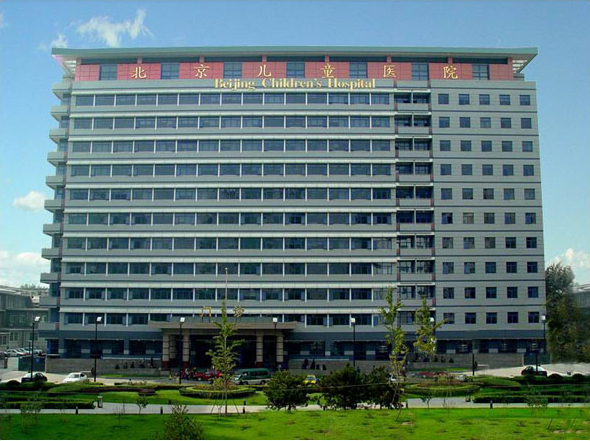010 ICH 临床指南
Guidelines for the Management of Spontaneous Intracerebral Hemorrhage
(自发性脑内出血的治疗指南)
2010年美国卒中协和脑出血临床指南
摘译 孙芸芸 梁志刚
烟台毓璜顶医院神经内科梁志刚
A Guideline for Healthcare Professionals From the American Heart Association/American Stroke Association
给予来自美国心脏协会/美国卒中协会的卫生保健专业人员的指南
一、Emergency Diagnosis and Assessment of ICH and Its Causes Recommendations
关于脑出血的紧急诊断和评估的建议
1. Rapid neuroimaging with CT or MRI is recommended to distinguish ischemic stroke [p1] from ICH[p2] (Class I; Level of Evidence: A). (Unchanged from the previous guideline)
CT或MRI(核磁共振成像)的快速成像便于很好地区分缺血性中风和脑出血(出血性脑中风)。(与先前的指南并无差异)
2. CT angiography and contrast-enhanced CT[p3] may be considered to help identify patients at risk for hematoma expansion (Class IIb; Level of Evidence: B),
CT血管造影术和强化CT或许可以辅助鉴别有血肿扩散危险的病人
and CT angiography, CT venography, contrast-enhanced CT, contrast-enhanced MRI, magnetic resonance angiography, and magnetic resonance venography can be useful to evaluate for underlying structural lesions, including vascular malformations and tumors when there is clinical or radiological suspicion (Class IIa;Level of Evidence: B). (New recommendation)
同时,CT血管造影术、CT静脉造影术、加强CT、加强MRI(核磁共振)、磁共振血管造影、磁共振静脉造影,可以检查到潜在的结构损伤,包括临床上或放射学上怀疑的血管畸形和肿瘤。(新推荐)
二、Medical Treatment for ICH Recommendations
关于脑出血内科治疗的建议[p4]
1. Patients with a severe coagulation factor deficiency or severe thrombocytopenia should receive appropriate factor replacement therapy or platelets, respectively (Class I;Level of Evidence: C). (New recommendation)
严重缺乏凝血因子或者说有严重血小板减少症的病人,应该适当地接受外来因子或者血小板来进行治疗。(新推荐)
2. Patients with ICH whose INR[p5] is elevated due to OACs[p6] should have their warfarin withheld, receive therapy to replace vitamin KCdependent factors and correct the INR, and receive intravenous vitamin K (Class I; Level of Evidence: C).
对于那些由口服抗凝剂OACs[p7] 导致INR(国际标准化比值)升高的脑出血病人,不应该再用华法令,而该接受上述治疗来取代维生素K依赖性因子,同时,该改善INR水平、接受静脉内维生素K治疗。
PCCs[p8] 血浆凝固剂have not shown improved outcome compared with新鲜冷冻血浆 FFP[p9] but may have fewer complications compared with FFP and are reasonable to consider as an alternative to FFP (Class IIa; Level of Evidence: B).
与新鲜血浆相比,血液凝固剂并没有显示出明显改善的治疗成果,但是可能并发症更少,是值得考虑的新鲜血浆替代物。
rFVIIa[p10] does not replace all clotting factors, and although the INR may be lowered, clotting may not be restored in vivo; therefore, rFVIIa is not routinely recommended as a sole agent for OAC reversal in ICH (Class III; Level of Evidence: C). (Revised
from the previous guideline).
重组凝血因子VII并不能替代所有的凝结因子;虽然INR可能会被降低,但是体内的血凝块并不能消除。所以,并不推荐把rFvlla作为脑出血病人OAC逆转的唯一药剂。(由先前指南修订)
3. Although rFVIIa can limit the extent of hematoma expansion in noncoagulopathic ICH patients, thereis an increase in thromboembolic risk with rFVIIa and no clear clinical benefit in unselected patients. Thus rFVIIa is not recommended in unselected patients. (Class III; Level of Evidence: A). (New recommendation) Further research to determine whether any selected group of patients may benefitfrom this therapy is needed before any recommendation for its use can be made.
虽然重组凝血因子VII可以限制非凝血异常性脑出血病人血肿扩大,但是应用rFVlla 时发生血栓的危险性却增加了,同时,对于随机选定的患者没有明显的临床利益。(新推荐)在可以得出有关其应用的任何推荐之前,需要做更深层次的研究来验证是否任何被选定的病人群体都可以从这种治疗获益。
4. The usefulness of platelet transfusions in ICH patients with a history of antiplatelet use is unclear and is considered investigational (Class IIb; Level of Evidence: B). (New recommend)
对于有抗血小板治疗病史的脑出血病人,给予输液血小板治疗的有效性并不清楚、有待于研究。(新推荐)
5. Patients with ICH should have intermittent pneumatic compression[p11] for prevention of venous thromboembolism in addition to elastic stockings[p12] (Class I;Level of Evidence: B). (Unchanged from the previousguideline)
为了预防脑出血病人出现下肢静脉栓塞[p13] ,除了下肢要穿弹力袜子、也要进行间歇性的充气压迫治疗(与先前的指南并无差异)
6. After documentation of cessation of bleeding, lowdose subcutaneous low-molecular-weight heparin or unfractionated heparin may be considered for prevention of venous thromboembolism in patients with lack of mobility after 1 to 4 days from onset (ClassIIb; Level of Evidence: B). (Revised from the previousguideline)
在确定病人出血停止后,皮下注射低剂量的低分子量的肝素或者肝素,可能用于防止病人发病后1到4天后发生静脉栓塞。(由先前指南修订)
三、Blood Pressure Recommendations(有关血压方面的建议)
1. Until ongoing clinical trials of BP intervention for ICH are completed, physicians must manage BP on the basis of the present incomplete efficacy evidence.Current suggested recommendations for target BP in various situations are listed in Table 6 and may be considered (Class IIb; Level of Evidence: C). (Unchangedfrom the previous guideline)
在正在进行的脑出血病人血压干预临床试验完成之前,医师必须依据目前不完善的循证医学证据的基础,来适当控制血压。目前,对于不同情况下所推荐的血压处理方法,请见表6,值得借鉴。(与先前的指南并无差异)
2. In patients presenting with a systolic BP of 150 to 220 mm Hg, acute lowering of systolic BP to 140 mm Hg is probably safe (Class IIa; Level of Evidence: B). (New recommendation)
对于收缩压在150到220mmHg之间的病人,收缩压迅速降低到140mmHg或许是安全的。(新推荐)
四、Inpatient Management[p14] and Prevention of Secondary Brain Injury Recommendations
关于住院病人的处理治疗和预防二次脑损伤的建议
1. Initial monitoring and management of ICH patients should take place in an intensive care unit with physician and nursing neuroscience intensive care expertise (Class I; Level of Evidence: B). (Unchanged from the previous guideline)
脑出血病人最初的监测和管理,应该在一个拥有神经科学重专业护理人员和内科医生的加强治疗中心ICU。(与先前的指南并无差异)
Management of Glucose(血糖控制)
1. Glucose should be monitored and normoglycemia is recommended (Class I: Level of Evidence: C). (New recommendation)
应该监测血糖,保证血糖的正常。(新推荐)
Seizures and Antiepileptic Drugs[p15] (控制惊厥及抗癫痫药物)
1. Clinical seizures should be treated with antiepileptic drugs (Class I; Level of Evidence: A). (Revised from the previous guideline) Continuous EEG[p16] monitoring is probably indicated in ICH patients with depressed mental status out of proportion to the degree of brain injury (Class IIa; Level of Evidence: B). Patients with a change in mental status who are found to have electrographic seizures on EEG should be treated with antiepileptic drugs (Class I; Level of Evidence: C). Prophylactic anticonvulsant medication should not be used (Class III; Level of Evidence:B). (New recommendation)临床的癫痫发作应该给予抗癫痫药物;(一级推荐A级证据)对那些精神状态抑制与脑损伤程度不相符合的脑出血病人,进行持续的脑电图监视可能会有一定的诊断预警作用。[p17] 那些发现有脑电图痫性异常的精神状态改变的病人,应该用抗癫痫药物(C级证据一级推荐);不建议预防性应用抗痉挛剂。(新推荐)
六、Procedures/Surgery Recommendations
(关于手术程序的建议)
1. Patients with a GCS[p18] score of <8, those with clinical evidence of transtentorial herniation[p19] , or those with significant IVH[p20] or hydrocephalus[p21] might be considered for ICP[p22] monitoring and treatment. A cerebral perfusion pressure of 50 to 70 mm Hg may be reasonable to maintain depending on the status of cerebral autoregulation (Class IIb; Level of Evidence:C). (New recommendation)
那些GCS评分小于8的患者,当他们有小脑幕切迹疝或者有明显的脑室内出血时或者脑积水的临床证据时,应该考虑实时监控颅内压并进行治疗。大脑的自动调节功能能够使大脑灌注压保持在50到70mmHg之间。
2. Ventricular drainage as treatment for hydrocephalus is reasonable in patients with decreased level of consciousness (Class IIa; Level of Evidence: B). (New
recommendation)
对于那些意识水平下降的的患者,脑室引流治疗脑积水是合理的。(新推荐)
七、Intraventricular Hemorrhage(脑室内出血)
1. Although intraventricular administration of recombinant tissue-type plasminogen activator in IVH[p23] appears to have a fairly low complication rate, efficacy and safety of this treatment is uncertain and is considered investigational (Class IIb; Level of
Evidence: B). (New recommendation)
虽然经侧脑室内给予重组组织型纤溶酶激活剂来进行治疗脑室内出血,可能有相当低的并发症比率,但是这种治疗的功效和安全性并不确定尚值得进一步探究。(新推荐)
八、Clot Removal Recommendations(关于血肿清除的建议)
1. For most patients with ICH, the usefulness of surgery is uncertain (Class IIb; Level of Evidence: C). (New recommendation) Specific exceptions to this recommendation follow[p24]
对于大多数脑出血病人来说,手术的有效性是不确定的。(对于特殊病人治疗选择在下面建议的提出)
2. Patients with cerebellar hemorrhage who are deteriorating neurologically or who have brainstem compression and/or hydrocephalus from ventricular obstruction should undergo surgical removal of the hemorrhage as soon as possible (Class I; Level of Evidence: B). (Revised from the previous guideline) Initial treatment of these patients with ventricular drainage[p25] alone rather than surgical evacuation[p26] is not recommended (Class III; Level of Evidence: C). (New recommendation)
那些神经体征进行性恶化或者脑干受压迫、脑室阻塞导致脑水肿的小脑出血的病人,应该尽快进行外科手术清除血肿。(由先前指南修订),只应用脑室引流而不是手术清除,对这些病人进行最初治疗效果不好。
3. For patients presenting with lobar[p27] clots >30 mL and within 1 cm of the surface, evacuation of supratentorial[p28] ICH by standard craniotomy might be considered
(Class IIb; Level of Evidence: B). (Revised from the previous guideline)
对于那些血肿体积大于30ml 、靠近脑表面小于1cm的脑叶出血的病人,可以考虑用标准的开颅手术治疗幕上脑出血。(由先前指南修订)
4. The effectiveness of minimally invasive clot evacuation utilizing either stereotactic[p29] or endoscopic aspiration with or without thrombolytic usage is uncertain and is considered investigational (Class IIb; Level of Evidence: B). (New recommendation)
应用辅用溶栓剂或者不用溶栓剂的的立体定位方法或者内窥抽吸法,来尽可能地清除的血凝块的疗效并不确定、尚值得探究。
5. Although theoretically attractive, no clear evidence at present indicates that ultra-early removal of supratentorial[p30] ICH improves functional outcome or mortality rate. Very early craniotomy may be harmful due to increased risk of recurrent bleeding (Class III; Level of Evidence: B). (Revised from the previous guideline)
虽然理论上很有吸引性,但是目前没有明确的证据表明,尽早清除幕上脑出血血肿能够改善脑功能、降低死亡率。过早的开颅手术增加了再发性脑出血的风险,因而可能会对病人有害。(由先前指南修订)
九、Outcome Prediction and Withdrawal of Technological Support Recommendation
1. Aggressive full care early after ICH onset and postponement of new DNR orders[p31] until at least the second full day of hospitalization is probably recommended(Class IIa; Level of Evidence: B). Patients with preexisting DNR orders are not included in this recommendation. Current methods of prognostication in individual patients early after ICH are likely biased by failure to account for the influence of withdrawal of support and early DNR orders. Patients who are given DNR status at any point should receive all other appropriate medical and surgical interventions unless otherwise explicitly indicated.
(Revised from the previous guideline)
在脑出血发生后无法复苏的延缓期中,至少到住院治疗第二天之前,都应该采用早期迅速而全面的护理。那些先前存在无法复苏情况的病人并不包括在这推荐之内。目前对特定脑出血病人早期进行预测的方法[p32] 可能是有失偏颇的,因为不能说明停止使用有效药物后对病人的影响和早期的无法复苏情况。任何被医生定为无法复苏的病人都应该接受所有其他形式的药物和手术干预,除非有其明确的原因。
十、Prevention of Recurrent ICH Recommendations
关于预防再发性脑出血的建议
1. In situations where stratifying a patient’s risk of recurrent ICH may affect other management decisions, it is reasonable to consider the following risk factors for recurrence: lobar location of the initial ICH, older age, ongoing anticoagulation, presence of the apolipoprotein E 2 or 4 alleles, and greater number of microbleeds on MRI [p33] (Class IIa; Level of Evidence: B). (New recommendation)
把病人再发性脑出血的风险进行分类可能会影响其他治疗决定的状态,应该考虑如下引起复发的危险因子:原发性脑叶出血的位置,老年人,正在进行的抗凝治疗,载脂脂蛋白E2或者E4等位基因的存在,以及核磁共振成像显现的大量微出血。(新推荐)
2. After the acute ICH period, absent medical contraindications, BP should be well controlled, particularly for patients with ICH location typical of hypertensive vasculopathy (Class I; Level of Evidence: A).(New recommendation)
在脑出血急性期之后,没有医学上的禁忌症的时候,应该好好控制血压,尤其对于那些脑出血部位在高血压导致的血管病变的病人。
3. After the acute ICH period, a goal target of a normal BP of <140/90 (<130/80 if diabetes or chronic kidney disease) is reasonable (Class IIa; Level of Evidence: B). (New recommendation)
在脑出血急性期之后,血压应该控制在收缩压低于140mmHg、舒张压低于90mmHg的水平(如果有糖尿病或者慢性肾病的病人,是低于13080)。(新推荐)
4. Avoidance of long-term anticoagulation as treatment for nonvalvular atrial fibrillation is probably recommended after spontaneous lobar ICH because of the relatively high risk of recurrence (Class IIa; Level of Evidence: B). Anticoagulation after nonlobar ICH and antiplatelet therapy after all ICH might be considered, particularly when there are definite indications for these agents (Class IIb; Level of Evidence:B). (Unchanged from the previous guideline)
因为存在复发相关的高风险,对于非瓣膜病变的房颤避免长期抗凝药物的应用,可能减少自发性脑叶脑出血复发。对于脑出血后抗凝剂及抗血小板药物的应用应当慎重,特别这些药物与脑出血有明显的相关性时。
5. Avoidance of heavy alcohol use can be beneficial (Class IIa; Level of Evidence: B). There is insufficient data to recommend restrictions on use of statin agents or physical or sexual activity (Class IIb; Level of Evidence: C). (New recommendation)
避免大量酗酒可能很有益。没有足够的证据表明应该限制使用他汀药物、及限制体力活动及性行为。
十一、Recommendations Rehabilitation and Recovery
有关康复的建议
1. Given the potentially serious nature and complex pattern of evolving disability, it is reasonable that all patients with ICH have access to multidisciplinary rehabilitation (Class IIa; Level of Evidence: B). Where possible, rehabilitation can be beneficial when begun as early as possible and continued in the community as part of a well-coordinated (seamless) program of accelerated hospital discharge and home-based resettlement to promote ongoing recovery (Class IIa; Level of Evidence: B). (New recommendat)
考虑到脑出血潜在的严重性和残疾进展的复杂因素,所有脑出血的病人应该能给予合理的综合性康复过程。如果条件允许,康复应该尽早开始、并在社区继续康复并作为提高医院周转和重建家庭式康复中心的连续性项目,康复持续不断地进行、非常有益于病人。
- 上一篇:脑溢血的发病原因及表现
- 下一篇:脑出血病因分型进展(转载)
- 本文延伸阅读
相关文章
- 认识和重视脑卒中---颈动脉系统疾病不容忽视
- 认识脑出血的病因
- 脑出血
- 脑出血病因分型进展(转载)
- 010 ICH 临床指南
- 脑溢血的发病原因及表现
- 新生儿脑溢血的原因
- 脑溢血的发病原因有哪些?
- 什么是中枢神经系统血管炎
- 什么是中枢神经系统血管炎
- 中青年群体更需提高对脑出血的警惕
- 高血压脑出血,老是头晕,什么原因?
- 热门阅读
- 热点排行
免费提问






